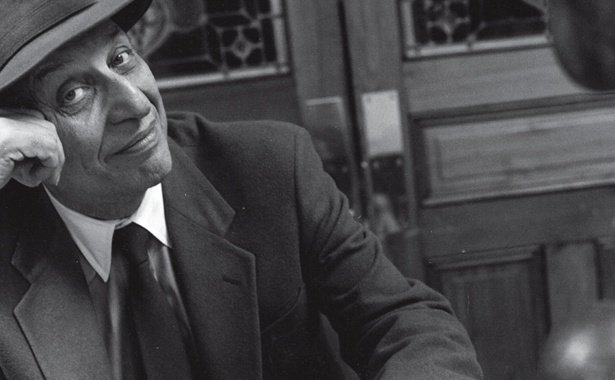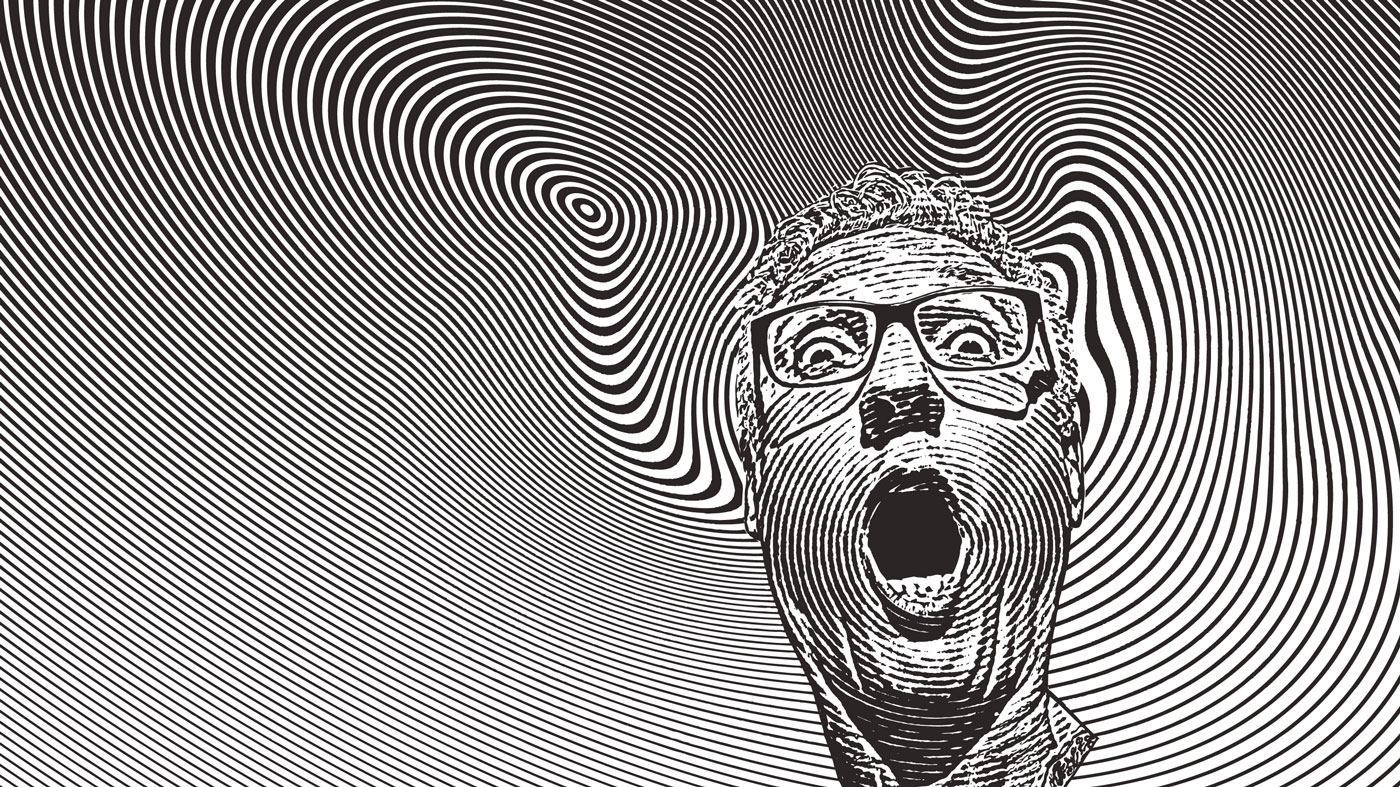Why logo designer Milton Glaser loved New York

The famous I heart NY logo is in the news this week after city authorities revealed a new adaptation of the design – 'we heart NY' to the general dismay of all fans of the original logo. While the sentiment may be in the right place, the design is not.
Part of a campaign to promote the city post-Covid-19, the new New York logo, has been ridiculed for its emoji-like shadow and strange arrangement. Someone on Twitter even suggested that Milton Glaser, the designer of the original I love New York logo, must be "kerning in his grave".
But just why did the late great graphic designer love New York? As the controversy continues, we're looking back at our 2009 interview with the man himself. For more graphic design inspiration, see our selection of famous graphic designers everyone should know.

Milton Glaser died in June 2020 aged 91. Unfortunately we can't ask him what he thinks about the new I love NY logo, but in the interview below, originally published by our sister title Computer Arts, the then-80-year-old designer offers reflections on his eureka moment, the importance of art history, his relationship with technology and the reasons why he loved New York.

Did you have a 'eureka' moment in terms of wanting to draw for a living?
Milton Glaser: I did. In fact, it's something I try to elicit from my classes because it's important to understand, if you're a practitioner, what it is that brought you to that perception and why it remains in your consciousness afterwards. When I was five years old, a cousin of mine came to take care of me, and he had a paper bag with him and he said, "Would you like to see a horse?" I said, "Yes," so he reached into the paper bag, pulled out a pencil and drew a picture of a horse on the side of the bag. Now, I'd never seen anyone actually draw anything resembling what was being talked about, because I'd only seen drawings being done by kids my own age.
I remember this: as he drew this picture, I was so astonished that I nearly fainted. In that moment, I realised you could create life through the vehicle of a pencil, and that sense of the miraculous has never left me.
Is there a piece of advice that you received early in your career to which you still refer today?
MG: When I was in junior high school, considering my future – I was only 14 at the time – I had a science teacher who encouraged me because I was very good at science. He thought I should go to a famous high school in New York called Bronx High School of Science, but I was thinking of going to the High School of Music and Art. I decided to take the test for the High School of Music and Art, and I passed. I was walking in the hallway and my science teacher came walking in the opposite direction. He saw me and said, "I want to talk to you." He took me into his office and I was terrified because I felt I had basically betrayed him, in a sense. He told me to sit down, then he bent over and reached into his desk and pulled out a box of French Conté crayons and said, "Do good work." I still feel every day that one of the things propelling me onward is this blessing I got when he said, "Do good work." I have to say, if I had to give anyone else a piece of advice in a very simpleminded and fundamental way, that would be it.
Daily design news, reviews, how-tos and more, as picked by the editors.
Do you give that advice when you're teaching?
MG: Let me tell you something about teaching: it's not what you say, it's who you are. The class immediately recognises the meaning of your life and commitment – you can blab for hours at a time and be unconvincing to a student who sees through it, or you can be something and transmit passion, dedication and interest to others. That's fundamentally what teaching is about.
When you look back at your body of work, what are the pieces that stand out for you – is there anything you particularly enjoyed?
MG: Be clear on this: enjoyment has nothing to do with accomplishment or level of performance. Enjoying it is one thing, and I have to say that most of the things in my life I have enjoyed. But I also think what is so significant about my life is that I've been able to sustain my interest over such a long period of time. I've never got bored with most of what I've done.
What are you seeing – in terms of design – that's exciting to you at the moment?
MG: I don't know what excitement means when you look at something, and I've never spent too much time looking at the field as my criteria for what I should be doing. I've been interested in history, anthropology and other cultures. Of course, you have to speak to some degree about the context of the work that's being done around you but you also have to transgress and invent your own vocabulary. So I can't say that I'm overwhelmed by the work that's going on at the moment – but I've seen too much of it. I've always thought that if you don't understand visual history, you basically can't invent very much that hasn't already been done.
Is there enough understanding of the past these days?
MG: Well, the field itself is dominated by fashion and by the idea of selling stuff, so you have to be concerned with what's currently being done, and the economy is based on the idea of change and new styles, and this year's whatever. Unfortunately, that's not the real basis for serious work. If you're more serious about it, you have to be more concerned about durability and ideas that go beyond the moment, so I think the best designers around are always designers that have had a kind of broader look and don't change with the prevailing wind. If you find that all you're doing is copying what is already being done, you'll have no position in the field. You'll have nothing to offer and, after 20 years of doing it, you're nowhere.
How do you see yourself – artist, graphic designer, illustrator? Does it matter?
MG: It depends on what you mean by 'matter'. Historically, it doesn't matter. History makes a judgment of what you do and that's quite independent of this week's typeface. When I look at Toulouse-Lautrec, it doesn't matter whether he was a poster designer or a painter; he was an artist working within a particular medium.
How important is New York City to your work?
MG: I've often thought about it and I can't imagine a life, for me, outside of the city. I would have found another way of being in the world and doing work, I'm sure. All I know is the nature of this city: its complexity, its diversity, that it offers so many opportunities for learning and the fact that it's so contradictory.
New York is not the most beautiful of cities. It changes all the time. It's not a city that imposes its vision on people who come in; they impose their vision here. Everything is open, everything is up for grabs, everything is to be questioned. That aspect of not accepting anything as being ultimate or final truth seems to me a source of great vitality, energy and options for people. Anything can happen here and that, of course, creates a very different environment than a culture where very little can happen.
What is your relationship to digital technology?
MG: I have an 'arm's length' relationship to it but I'm also mad about what you can do with a computer. I love working with other people on the computer, sort of like dancing. It's a way of working collaboratively that's never been done before. It's a great medium for extending ideas. But you have to come to it with an existing sense of form. If you don't have form and understanding of visual phenomena and don't understand how to draw, from my point of view, it's a very mischievous instrument because it forces you into patterns that it imposes.
Incidentally, in teaching, I find a lot of students beginning to resent the computer as too powerful to use without thinking. They now describe it the same way; they say, "Before I start to do anything, I make notes and sketches and draw because otherwise the computer dominates everything I do." I think that's an interesting perception. I also think it's true.
How do you feel about being considered a 'design icon'?
MG: The most important thing in design, it seems to me, is the consequence of your action, and whether you're interested, fundamentally, in persuading people to do things that are in their interests. The fundamental question I always ask is: has the accumulated work actually added to the health of the culture or have you been harmful? It's a question I ask my students.
A week or two ago, I gave a class of 28 the question of whether they would be willing to do something that would ultimately cause the user's death, referring, among other things, to cigarettes. I was surprised that five were willing to do that. On the other hand, no one in the class was willing to work for a company that employed child labour, so you realise that the ethical nature of the field is very peculiar. Sometimes ethics are entirely based on status or what's hot at the moment. I think one of the things you use to evaluate the meaning of your work is whether you have obeyed the Hippocratic injunction 'Do no harm.' I think that's a very desirable description of an attitude that would be beneficial.
What's next for you and the company. Where are you heading?
MG: Good Lord! I'm heading straight for the grave. I'm 80 years old, for God's sake! You cannot anticipate an endless career. I just come in here and try to do a good day's work enthusiastically, and not think about where I'm going.
Read more:

Joe is a regular freelance journalist and editor at Creative Bloq. He writes news, features and buying guides and keeps track of the best equipment and software for creatives, from video editing programs to monitors and accessories. A veteran news writer and photographer, he now works as a project manager at the London and Buenos Aires-based design, production and branding agency Hermana Creatives. There he manages a team of designers, photographers and video editors who specialise in producing visual content and design assets for the hospitality sector. He also dances Argentine tango.
